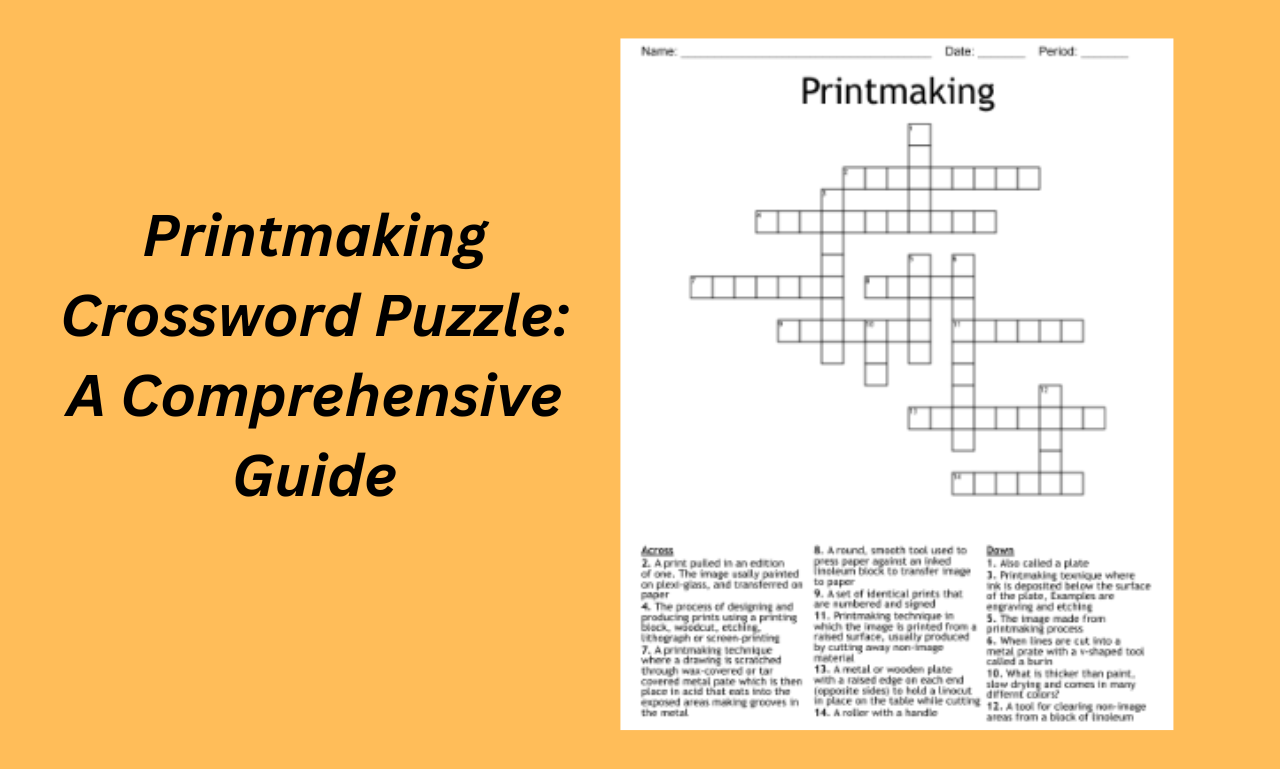Printmaking is an intricate art form that has captivated artists and enthusiasts for centuries. When combined with the timeless appeal of crossword puzzles, it creates an engaging and educational experience. This article delves into the fascinating world of printmaking crossword puzzle, exploring its origins, techniques, and benefits.
The Origins of Printmaking
Printmaking is an artistic process that involves transferring images from a matrix (such as a woodblock, metal plate, or screen) to another surface, usually paper. This art form dates back to ancient China, where woodblock printing was first developed around the 7th century. Over time, printmaking spread to other parts of the world, evolving into various techniques like etching, engraving, lithography, and screen printing.
The Evolution of Crossword Puzzles
Crossword puzzles, on the other hand, have a more recent origin. The first known crossword puzzle was published in 1913 by Arthur Wynne in the New York World newspaper. Since then, crossword puzzles have become a popular pastime, known for their ability to challenge and entertain individuals of all ages. The combination of printmaking and crossword puzzles creates a unique blend of visual and mental stimulation.
Techniques in Printmaking
There are several key techniques in printmaking, each with its own distinct characteristics and methods:
- Relief Printing: This is one of the oldest printmaking techniques. It involves carving an image into a surface like wood or linoleum. The raised areas are inked, and the image is transferred to paper by applying pressure.
- Intaglio: This technique includes etching, engraving, and drypoint. It involves incising an image into a metal plate. After applying ink to the plate, it is wiped clean, leaving the ink solely in the lines that have been incised. The image is then transferred to paper under high pressure.
- Lithography: This method is based on the repulsion of oil and water. An image is drawn with a greasy substance on a limestone or metal plate. The drawn regions of the plate are then treated with a chemical solution that makes sure the non-image areas reject ink and the drawn areas attract it.
- Screen Printing: Also known as silkscreen printing, this technique involves creating a stencil on a mesh screen. Ink is pushed through the screen onto the printing surface, producing vibrant and bold images.
Creating a Printmaking Crossword Puzzle
Combining printmaking with crossword puzzles can be a creative and educational project. Here’s a step-by-step guide to creating your own printmaking crossword puzzle:
- Choose a Printmaking Technique: Select a printmaking technique that you are comfortable with. Relief printing is often a good starting point for beginners.
- Design the Crossword Grid: Draw a grid on a piece of paper. Determine the size of the puzzle and the number of clues you want to include.
- Carve the Grid: If you’re using relief printing, transfer the grid design onto a linoleum block or woodblock. Carefully carve out the grid, leaving the lines raised.
- Create Clues and Answers: Write the crossword clues and corresponding answers. Consider using printmaking terminology and related themes to make the puzzle more engaging.
- Inking and Printing: Ink the carved block and press it onto a piece of paper. Repeat this process until you have a clear print of the crossword grid.
- Fill in the Clues: Write the clues next to the corresponding numbers on the printed grid. You can also print the clues separately and attach them to the puzzle.
Benefits of Printmaking Crossword Puzzles
Creating and solving printmaking crossword puzzles offer numerous benefits:
- Enhances Creativity: Combining visual art with word puzzles stimulates both the creative and analytical parts of the brain.
- Educational Value: These puzzles can serve as an educational tool, helping individuals learn about printmaking techniques, terminology, and history.
- Stress Relief: Engaging in printmaking and solving crossword puzzles are both relaxing activities that can reduce stress and improve mental well-being.
- Improves Vocabulary: Crossword puzzles are known for enhancing vocabulary and language skills. Incorporating printmaking terms further expands one’s lexicon.
Conclusion
Printmaking crossword puzzles offer a unique and enriching experience, blending the visual artistry of printmaking with the intellectual challenge of crossword puzzles. Whether you are an artist looking to expand your creative horizons or a puzzle enthusiast seeking a new challenge, creating and solving printmaking crossword puzzles can be a fulfilling and enjoyable activity. Embrace this fusion of art and wordplay, and discover the endless possibilities it holds.
By understanding the origins, techniques, and benefits of printmaking crossword puzzles, you can appreciate the depth and creativity involved in this captivating pastime. So, pick up your carving tools, design a crossword grid, and embark on a journey that intertwines the beauty of printmaking with the intrigue of word puzzles.
FAQs
What is the most famous crossword puzzle?
While there are many contenders, the New York Times crossword is often considered the most famous and prestigious in the United States. It’s known for its challenging clues and wide readership.
What is the most used word in crossword puzzles?
It’s difficult to pinpoint a single most used word, as crossword puzzles vary greatly in theme and difficulty. However, common words like THE, AND, and ARE frequently appear due to their versatility.
What type of puzzle is a crossword?
A crossword puzzle is a word puzzle. It typically consists of a grid of black and white squares, where players fill in words horizontally and vertically based on given clues.
What was the first crossword called?
The first crossword puzzle is believed to have been created by Arthur Wynne and published in the New York World newspaper on December 21, 1913. It was called a word-cross.
Which Daily crossword is easiest?
The perceived difficulty of daily crosswords can vary from person to person. However, many crossword enthusiasts find that mini crosswords or puzzles labeled as easy or beginner are generally less challenging.

